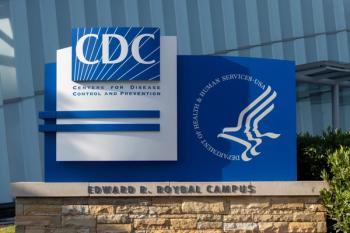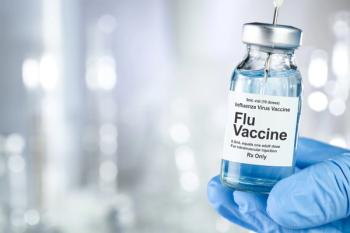
- September 2018 Immunization
- Volume 84
- Issue 9
Buckle Your Seatbelts: Here Comes Flu Season!
The most common strains of influenza start to emerge in epidemics a full 6 to 9 months ahead of European and North American outbreaks
THIS YEAR’S STRAINS HAVE BEEN BREWING IN SOUTHEAST ASIA FOR SOME MONTHS NOW
The most common strains of influenza start to emerge in epidemics a full 6 to 9 months ahead of European and North American outbreaks.1 With remarkable consistency of timing and travel, the common strains hit our shores every year as the leaves begin to fall.
INFLUENZA IS ONE OF THE LEADING CAUSES OF MORTALITY EACH YEAR
We must not forget that influenza is a major cause of sickness and death in the United States and beyond, despite advanced medical technologies, widely available influenza vaccines, and an extremely predictable calendar cycle (we know it’s coming each fall). The most recent findings from the journal Vaccine2 produced some rather sobering statistics (note that numbers vary from year to year because of each season’s specific strains and factors):
• $11.2 billion in total economic cost
• 3.7 million outpatient medical visits
• 650,000 emergency department visits
• 247,000 hospitalizations
• 36,000 deaths
• 20.1 million days of productivity lost
UP TO THE TASK: NOW EXCEEDING EXPECTATIONS
Pharmacists have always played a role in our collective response to the flu, but in recent decades, they have been tasked with more forward roles with the support of public health—minded advocates.
Vaccines
Nearly 300,000 pharmacists are now certified to immunize, with fully 80% of all community pharmacies offering the service.3 In 2013, more than 4 million American adults were vaccinated who otherwise would not have been had pharmacies not been able to provide the service.4 For every additional pharmacist per 1000 people in a given geography, a 13% increase in the odds of receiving a vaccination was observed, with nonwhite Hispanic populations’ seeing a 38% increase.5 With roughly 40% of Americans getting the flu vaccine each year and a Healthy People 2020 goal of 80% for most populations, pharmacists who in the past have been viewed as a tool for advancing public health are now viewed as essential to public health. We will likely play one of the largest roles in closing that gap over the next few years.
Symptomatic care
The average household visits the pharmacy 26 times per year for OTC products, and no doubt many of those are trips are for help in treating symptoms of the flu. That adds up to billions of dollars in sales and likely millions of hours of symptom relief, hours of sleep saved, and productivity at work saved.
Education
Pharmacies are an excellent vehicle for educating the public on influenza, the vaccine, the symptomatic care options, and treatment. As the American Pharmacists Association once opined, the equivalent of the entire population of the United States is in a pharmacy once a week. That is a powerful platform we all have with a frequency of touch points that the rest of the health care system envies.
Treatment (antivirals)
Expediency is critical with antiviral treatments for influenza. Treatment within 2 days is essential for a chance at success. Despite reducing symptoms by only a day, treatments reduce complications from influenza and are an important option for high-risk patients, including those with lung disease, young children, elderly individuals, and pregnant women.
Point-of-care testing (Coming soon to a pharmacy near you?)
Of course, combining the ability to positively identify influenza goes hand in hand with treatment. Some exciting advances are being made in point-of-care testing in Pennsylvania and beyond. Again, look to public health advocates to be your advocates to allow widespread adoption of community-based point-of-care testing.
Don’t forget special populations
A record-high number of children, 172, died last year from influenza, 80% of whom did not receive the flu vaccine. The vaccine reduces the risk of death by 65% in otherwise healthy children.6 Elderly individuals and those with chronic disease or who are immunocompromised are targets for education, especially where state law allows immunization by a neighborhood pharmacist.
Don’t forget the other vaccines
Both influenza and pneumococcal vaccines are important for special populations. The CDC even reports outbreaks of both together.7 For many vaccines, there is no better time to get other vaccines—each year, another 14,000 unvaccinated individuals die from noninfluenza diseases. Use the flu season as an opportunity to engage all patients’ needs and show them you are a service provider, not just a pill counter!
Troy Trygstad, PharmD,PhD, MBA, is vice president of pharmacy programs for Community Care of North Carolina, which works collaboratively with more than 1800 medical practices to serve more than 1.6 million Medicaid, Medicare, commercially insured, and uninsured patients. He received his PharmD and MBA degrees from Drake University in Des Moines, Iowa, and a PhD in pharmaceutical outcomes and policy from the University of North Carolina at Chapel Hill. He also serves on the board of directors for the American Pharmacists Association Foundation and the Pharmacy Quality Alliance.
REFERENCES
1. Swaminathan N. That flu you caught? It came from East and Southeast Asia. Sci Am. April 16, 2008.
2. Putri WCWS, Muscatello DJ, Stockwell MS, Newall AT. Economic bur- den of seasonal influenza in the United States. Vaccine. 2018;36(27):3960- 3966. doi:10.1016/j.vaccine.2018.05.057.
3. Westrick SC, Patterson BJ, Kader MS, Rashid S, Buck PO, Rothholz MC. National survey of pharmacy-based immunization services [pub- lished online July 23, 2018]. Vaccine. doi: 10.1016/j.vaccine.2018.07.027. 4. Drozd EM, Miller L, Johnsrud M. Impact of pharmacist immunization authority on seasonal influenza immunization rates across states. Clin Ther. 2017;39(8):1563-1580. doi: 10.1016/j.clinthera.2017.07.004.
5. Gai Y, Li Feng L. Relationship between pharmacist density and adult influenza vaccination after controlling for individual and neighbor- ONhood effects. J Am Pharm Assoc (2003). 2017;57(4):474-482.e12. doi: 10.1016/j.japh.2017.03.011.
6. cdc.gov/flu/spotlights/reported-flu-children-deaths.htm
7. cdc.gov/mmwr/volumes/67/wr/mm6722a4.htm?s_cid=mm6722a4_w
Articles in this issue
about 7 years ago
The Waiting Is the Hardest Partabout 7 years ago
New and Novel HIV Medicationsabout 7 years ago
Self-Care for Respiratory Issuesabout 7 years ago
States Continue to Expand Availability of Telehealthabout 7 years ago
Educating Patients About the Dangers of Sharing Rx Medicationsabout 7 years ago
When Complying With a Law Enforcement Request Causes ProblemsNewsletter
Stay informed on drug updates, treatment guidelines, and pharmacy practice trends—subscribe to Pharmacy Times for weekly clinical insights.




















































































































































































































